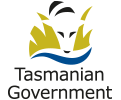Non-advertising approaches to marketing
There are non-advertising approaches to marketing and promotion. They generally require less money to implement and are often more effective. The only catch is that they require time and creativity to develop.
Identity (look and feel)
- Decide on the ‘look and feel’ you want for the service or program (product) and present that every time.
- Develop a ‘tag line’ (slogan) for use on all marketing materials.
NOTE: Government services and programs must only carry the State Government logo.
Marketing and promotion ideas
Monthly updates/letters
These can be print or online. Develop a simple template (banner + tag line + contact details) to build up product recognition, and use it every time.
Testimonials
Comments from satisfied clients can be added into many pieces of marketing – include just a sentence or two in adverts, brochures, newsletters, web sites.
Flyers/posters/flags/billboards
Can be kept simple but always include the name of product (program/service), tag line and contact details.
Post in areas frequented by target audiences eg shop windows, gymnasium, clubs, libraries and Online Access Centres (OACs) - Tasmania has 64 OACs across the State where people can give talks, conduct training etc. OACs are also a place to publicise activities.
Contact
Ph: 6233 6212
Visit: OAC website
Direct mail, email and/or fax lists
Email distribution saves time and money and is becoming the norm. Fax broadcast is also cheaper than mail.
Talks/face-to-face contact
Target clubs/organisations where guest speakers are welcome eg Rotary, Independent Retirees, Senior Citizens, State Library.
Build up a ‘folio’ of speaker profiles and their area of expertise, and leave it with organisations.
Prepare some core speaker notes on your product (program/service).
Signs and banners
Create a podium banner (for speaking engagements, courses, launches etc) featuring the product name and tag line.
Bumper stickers are quite cheap and can assist in keeping your brand name, website or marketing message in front of a lot of people. Make sure they can be read from a car bumper or back window.
Shows/expos/public interest events
Piggyback on other organisations’ displays or expos that are relevant to your program/service.
See Policy 4.1.11 - Public events and announcements
See Policy 4.1.12 - Shows and exhibitions
Tasmania’s Event Calendar
Add your events to Tourism Tasmania's Events Calendar and tap into special weeks.
Creativity
Create a performance to market your program/service.
Use low-cost balloons to promote your activity eg tether a big balloon to your roof or parking lot.
Giveaways
- Fridge magnets.
- Stickers.
- Bookmarks.
Websites
Use your or others’ websites to publicise upcoming events.
See Policy 4.1.9 - Internet and electronic communication
Sponsorship
Get sponsorship to produce note pads, pens, carrier bags etc, for use by clients at courses.
See Policy 4.1.14 - Sponsorship/partnering
Phone messages
If you use voicemail, make sure your phone message says something promotional.
Media
Target community newspapers - they are always looking for news items.
Other media that costs nothing – major dailies, breakfast radio, talkback radio, drive-time radio, community service announcements (CSAs) for press, radio and TV.
Press releases – the key is the headline and making sure it sounds like news not an advertisement.
Write feature articles – these boost exposure and help you to be regarded as an expert in your field.
Use free advertising in appropriate club, church, school, library, organisation bulletins and newssheets.
Develop a media kit or ‘backgrounders’.
Post small and inexpensive classified advertisements.
Write letters to the editor.
See Policy 4.1.10 - Media relations
Keep in touch marketing
Send a personalised thank you to each new client or contact (these can be produced on the computer).
Networking
This is a highly beneficial and cost efficient way to get the word out about your program/service or specific activities.
Work with like organisations to provide and exchange information to customers, including displaying brochures etc.
Collaboration
Establish marketing alliances/collaborations – formal and informal – to keep costs down and spread the message.
See Policy 4.1.14 - Sponsorship/partnering
Database
No matter which marketing methods you use, keep track of where your enquiries and new clients are coming from.
